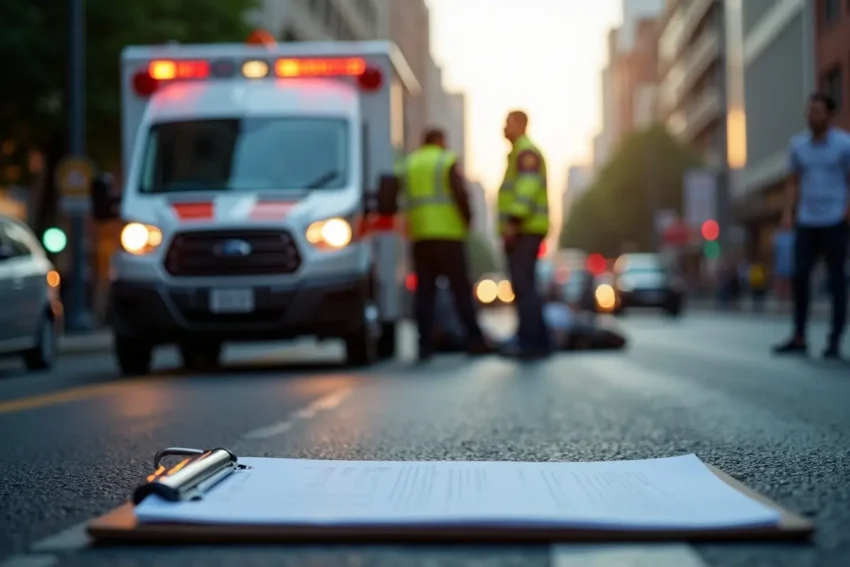After a motorcycle crash, the priority is immediate medical care. In many cases, that means being transported by ambulance from the scene to the hospital. While the urgency of treatment outweighs financial considerations in the moment, the ambulance bill often comes as a shock later. Even with no-fault insurance, motorcycle riders may face steep costs.
Understanding how ambulance services are billed, how no-fault coverage applies, and what options are available to reduce or dispute charges is crucial for anyone recovering from a motorcycle accident. For those consulting motorcycle crash lawyers, this knowledge is just as necessary as medical care itself.
How No-Fault Insurance Handles Ambulance Costs
No-fault insurance was designed to provide quick access to medical care after an accident, regardless of who is at fault. In practice, however, coverage for motorcyclists is often narrower than for car drivers. In some states, motorcycles are excluded from no-fault benefits altogether. In others, coverage exists but at much lower caps, which can be used up rapidly in a serious accident.
Ambulance rides typically fall within medical benefits, but policy caps mean costs can still become the rider’s responsibility. This is especially true in severe crashes that require air ambulance transport, which is far more common for motorcycle accidents than automobile collisions due to the likelihood of critical injuries.
Why Ambulance Costs Escalate for Riders
Ambulance charges are not limited to the ride itself. Fees may include base service, mileage, and emergency treatments given during transport. In rural areas where motorcycle accidents often occur, long distances to trauma centers mean higher charges. When a helicopter is required, costs rise dramatically and can quickly surpass insurance limits.
While exact amounts vary, the key issue is that ambulance transport for motorcyclists often consumes most or all of the available no-fault benefits, leaving other medical bills uncovered.
Coverage Gaps Motorcyclists Should Anticipate
Due to the structure of insurance policies, riders may still face unexpected bills even when no-fault insurance is in effect. The most common gaps include:
- Exclusions for motorcycles: Some states exclude motorcycles from no-fault coverage altogether.
- Low policy caps: Medical benefits may be capped at levels far below the cost of a serious accident.
- Out-of-network billing: Ambulance companies often bill independently and may not contract with insurers, allowing them to seek payment directly from patients.
These gaps underscore the importance of reviewing your policy closely and, when necessary, seeking legal advice to address costs associated with accident-related claims.
What Riders Can Do About Ambulance Bills
Motorcyclists are not without options when facing unexpected ambulance bills. Practical steps include:
- Request a detailed bill to confirm all charges are accurate.
- Appeal to your insurer if the charges appear above reasonable rates or are improperly denied.
- Negotiate with providers for hardship reductions or payment plans if insurance leaves a balance.
For those pursuing injury claims, experienced lawyers can also incorporate ambulance expenses into broader settlement negotiations, ensuring victims are not left to shoulder costs alone.
Support for Uninsured Riders
For uninsured motorcyclists, ambulance bills can be especially daunting. Medicaid may provide retroactive coverage for emergency services, while some municipalities or nonprofits offer limited assistance. Taking action quickly is essential, since ignoring a bill risks it being referred to collections.
The Legal and Financial Takeaway
Ambulance transport is often unavoidable after a motorcycle crash, yet the financial consequences can be significant. No-fault insurance, while valuable, does not always protect riders from gaps, exclusions, or out-of-network billing. Helicopter transports and long-distance rides can overwhelm limited coverage, leaving victims with large out-of-pocket expenses.
For riders recovering from a serious crash, understanding how ambulance costs intersect with motorcycle-specific insurance rules is crucial. Motorcycle crash lawyers can not only pursue compensation for injuries but also help ensure ambulance expenses are accounted for in settlement negotiations. Being proactive about both medical recovery and financial protection is the best way to reduce the lasting impact of a motorcycle accident.

